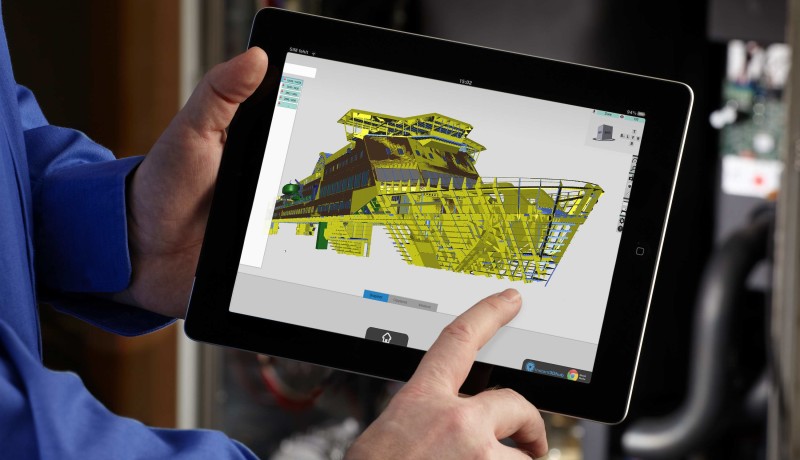3D data for every device
May 09, 2017
on
on

To exchange documents and photos between users with different devices, two file formats have emerged as the 'lingua franca' – PDF for documents and JPG for photos, drawings and the like. It is almost impossible to think of a device that cannot handle these data formats.
However, with 3D-material the situation is less straightforward – there is no standard format for this. And this is not the only problem: 3D-data is generally extremely complex and bulky, and then it can be difficult to distill this into something that can be viewed on any arbitrary device (so, for example, VR-glasses and smartphones).
At the Fraunhofer Institut für Graphische Datenverarbeiting (IGD) a solution has now been developed for this problem: the web-based instant3DHub. The critical part with this is the software, which runs on a server, that selects only the data that the user actually requires – for example by sending only the information of those parts that are visible to the end user. In the example of a power station, which comprises some 3.5 million parts, only the about 3000 visible parts are calculated and sent to the user.
Another important characteristic of instant3DHub is that it is not necessary to load all the 3D-data into the final device – the data is streamed in real time instead. This way, smaller portable devices (smartphones, tablets, VR-glasses) can also make optimal use of the data. This is essential for virtual and augmented reality applications. The car manufacturers BMW, Daimler and Porsche already make extensive use of instant3DHub.
However, with 3D-material the situation is less straightforward – there is no standard format for this. And this is not the only problem: 3D-data is generally extremely complex and bulky, and then it can be difficult to distill this into something that can be viewed on any arbitrary device (so, for example, VR-glasses and smartphones).
At the Fraunhofer Institut für Graphische Datenverarbeiting (IGD) a solution has now been developed for this problem: the web-based instant3DHub. The critical part with this is the software, which runs on a server, that selects only the data that the user actually requires – for example by sending only the information of those parts that are visible to the end user. In the example of a power station, which comprises some 3.5 million parts, only the about 3000 visible parts are calculated and sent to the user.
Another important characteristic of instant3DHub is that it is not necessary to load all the 3D-data into the final device – the data is streamed in real time instead. This way, smaller portable devices (smartphones, tablets, VR-glasses) can also make optimal use of the data. This is essential for virtual and augmented reality applications. The car manufacturers BMW, Daimler and Porsche already make extensive use of instant3DHub.
Read full article
Hide full article


Discussion (1 comment)